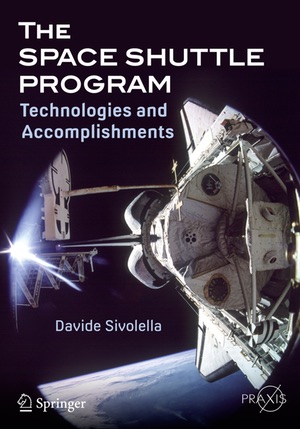Review: The Space Shuttle Program: Technologies and Accomplishmentsby Jeff Foust
|
| The original requirements for the shuttle included no capability for doing spacewalking, since NASA envisioned the shuttle as more like an airplane that would take off, deliver its satellite, and return to Earth. |
The book examines those various uses of the shuttle on a chapter-by-chapter basis, after an introductory chapter on the development of the shuttle itself in the 1970s. These include the obvious uses like repairing the Hubble Space Telescope and launching (and occasionally retrieving) satellites. There are also chapters on science and technology development missions, Spacelab and other science missions, commercialization efforts like the payload specialist flights of Charlie Walker, and military shuttle missions (about which, decades later, little is still known.) The assembly of the ISS isn’t included in the book, beyond a chapter on experiments in early shuttle flights about on-orbit assembly of structures, critical to the later assembly of the station itself.
While the topics may be familiar ground for many readers, Sivolella offers some interesting insights about the various uses of the shuttle. For example, the original requirements for the shuttle included no capability for doing spacewalking, since NASA envisioned the shuttle as more like an airplane that would take off, deliver its satellite, and return to Earth. The success of the spacewalks to repair Skylab after its launch convinced many in the agency that it would be useful to have that capability, which in the subsequent decades became essential to human spaceflight.
But for all the technical success that many of those applications enjoyed, they were ultimately not programmatically successful. The Challenger accident took the shuttle out of the satellite launching business, but even if it hadn’t the shuttle was becoming less competitive compared to expendable rockets. The military, reluctant to make use of the shuttle in the first place, also ended its use of the shuttle a few years after the post-Challenger return to flight. Scientific research could be done better on the space station or robotic spacecraft, and satellite servicing outside of its use on Hubble was limited (there’s renewed interest in satellite servicing today, but using robotic systems, particularly on satellites in geostationary orbit beyond the reach of the shuttle.)
So, despite this versatility, was the shuttle a mistake, as then-NASA administrator Mike Griffin said in 2005, a comment included in the book’s final chapter? Sivolella disagrees. “Although the idea of the Space Transportation System was faulty, the Shuttle was a remarkable flying machine and will remain one of the most sophisticated creations of humankind for a long time,” he writes. It was, he acknowledges, too far of a leap from Apollo-era capsules to the shuttle, but said that the shuttle might have been more successful had it received more funding in its development. Those limited budgets, he said, “forced NASA and the US aerospace industry to accept onerous requirements and settle for the least expensive solutions, even though it was readily apparent they were not the best in engineering terms.”
There seems to be no rush by the United States, other countries, or other companies to develop something with the versatility—and complexity and cost—as the shuttle. The versatility the shuttle demonstrated over the course of its history, despite its cost and other problems, won’t be duplicated any time soon, or perhaps ever.
